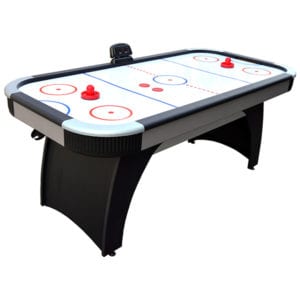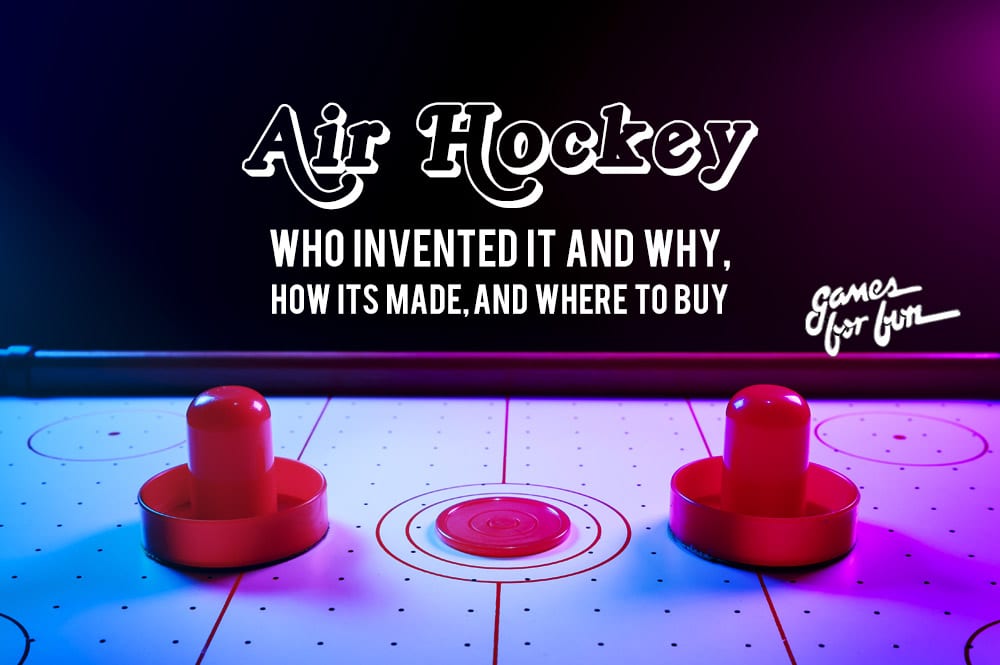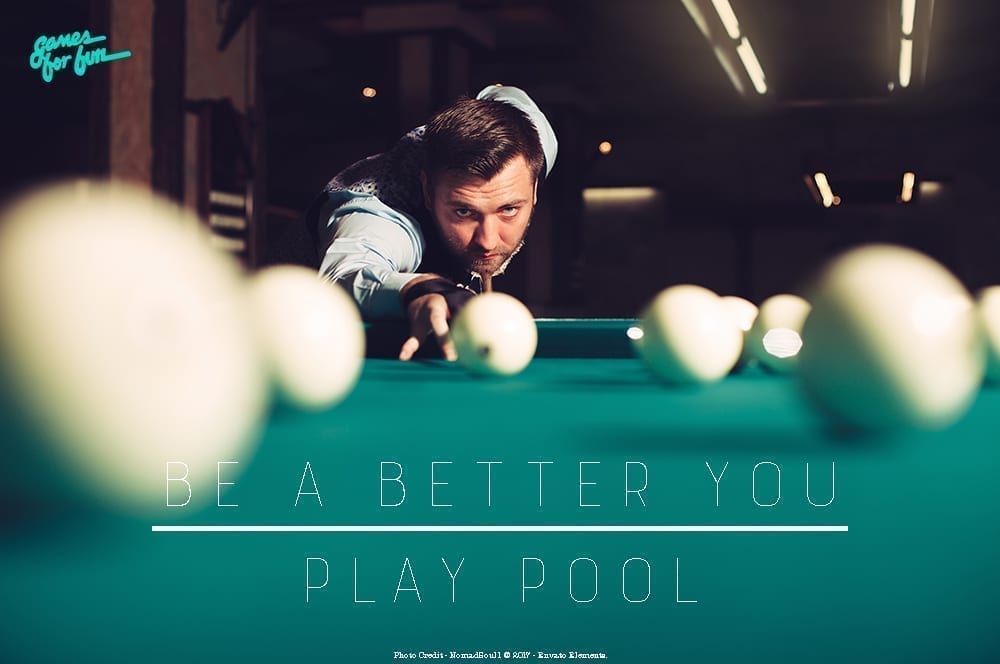What’s the deal with air hockey? We feel like it’s kind of an underdog when it comes to game tables. People go straight to pool or foosball — not that there’s anything wrong with those (we love them). But we feel like air hockey could use a little more love these days. So we’re showing that love by addressing some cool things about the game.
A brief history of air hockey: Who invented it and where
How are air hockey tables made (basically, what’s with the air?)
Tips on winning the game + where to buy air hockey tables
Our guide to providing with the basics about air hockey knowledge is finally here. The objective: For you to knock the air out of your friends the next time this conversation comes up! (If “air hockey” talk doesn’t come up, we trust that you’ll figure out a way to make it happen.)
The history of air hockey: Who invented it and where it was invented
Air hockey tables are a relatively recent invention when compared to other game tables like pool tables and shuffle boards. In the most basic sense, it’s a delightful amalgamation of billiards and ice hockey.
In 1969, three men — Phil Crossman, Bob Kenrick, and Brad Baldwin — were all employees of Brunswick Billiards, a maker of pool tables. A fourth man, an ice-hockey enthusiast named Bob Lemieux, is also credited for inventing the game.
With Brunswick’s backing, thousands of tables were made and installed in arcades, pizza parlors, community-center basements—anywhere with a stretch of faux-wood panelling and a proximate crew of wan, beanpole kids.
The game caught on quickly and by 1974, the beloved sportscaster Marv Albert was delivering tense play-by-play narration as thirty-one regional champs jockeyed for a cash prize of $5000 and the undeniably radical title of “Best Air Hockey Player in the World” at the sport’s first championship tournament, held in New York City.
However, by the late 1970s, the game’s popularity had peaked due to the increase in technology (i.e. flashy, bleeping arcade games… no hate, only truth). But, we digress.

How air hockey tables are made, including the famous air pockets
Air hockey tables are fun for everyone. It’s fun, exciting, and easy to play. You’ve likely scuffled around an air hockey table a few times growing up, curious about the lightweight nature of the puck.
So, how do these tables magically skate pucks across the board? It’s a fairly simple set up that gives air hockey tables their floating qualities.
Air hockey tables are made of slick (usually plastic) surfaces. This playing field is surrounded by raised edges that prevent the puck from flying off the table. Each air hockey table is drilled symmetrically with tiny holes across the entire surface, creating an even and frictionless playing field.
The key to creating this effect lies in the smooth surface and evenly blown air that the fan pumps up through the playing board. Underneath the table, a fan blows air through these holes. The air pressure is what keeps the puck floating, making it appear as though the puck is levitating. This is the same principle used in hovercraft technology.
As a result, opposing players can hit the puck toward the other end of the board without it getting stuck. That’s why the puck usually keeps moving — albeit rather slowly — even if you try to stop it. The reason for this is the small funnels of air being forced up through the floor. (Put your hand to the table and you’ll feel the air coming through.)
Source: How Air Hockey Tables Work
The fact, though, is that the puck glides too quickly and effortlessly for players to really track it. An early advertisement for the game admits as much: “Puck actually floats on air—travels faster than the eye can follow.”
What you hope for, instead, is that, in the act of frantically thwacking the puck away from your slot, you might inadvertently score. So that might be an additional reason for the game’s short-lived glory in the ’70s.
How to play air hockey (to win) and where to buy it
Short-lived or not, air hockey is a sport that is fun to play. It requires two players and each objective is to score more points in the opposing player’s goals.
Of course, you’ll need an air hockey table. And, no, you don’t have to break the bank. There are affordable air hockey tables that are in the 3-digits, such as this one and this one, and there are some tables that are on sale.
Now, onto the game. While more details to the rules of the game can be read here, the following is the most basic (of the basic) guidelines to how to play:
Starting: For beginners, you can begin the game by starting with the puck in the centre and giving it a good smack!
Scoring: For a player to score a point, the puck must land in the opposing player’s goal, and stay there – if it bounces in and out, it doesn’t count! It doesn’t matter whose mallet the puck touched last, so own goals are entirely possible. Within each game, possession of the puck for the next serve passes to the player who was scored upon.
Winning: The winner of each game is the first player to accumulate seven points. If you’re playing tournament-style, you’ll also be playing to best-of-seven – so the first person to win 4 games.
Here are some additional tips to keep in mind when playing:
- You can stand anywhere around the air hockey table on your side of the centerline; don’t stand past the line.
- Only one puck can be used at a given moment.
- The puck may be struck with any part of the mallet except the bottom surface.
- A player has 7 seconds to return a shot that crosses the centerline. The 7 seconds begin as soon as the puck enters and remains on that player’s side of the centerline. Violation results in a foul.
- When a player is scored upon, they have 10 seconds to remove the puck from the goal and place it in play. The 10 seconds start as soon as the puck has fallen completely through the goal and is available for the player to place into play. This rule is suspended during the course of a time-out.
- Each player may take one time-out per game, no longer than 10 seconds and may exercise their time-out only when the puck is in their possession or not in play.
- After each game, players swap sides of the air hockey table.
If you want to learn a more extensive process on how to play air hockey, read here.
And don’t forget that with an air hockey tables comes care (like anything in life). Be sure to check out our tips on how to maintain your air hockey table!







